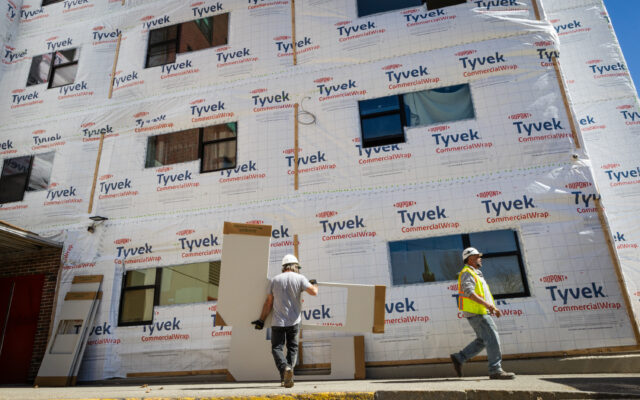
Maine is lagging the lofty housing goals it set last year
By Zara Norman, Bangor Daily News Staff
Much of Maine is already lagging behind the goals set in two state-sponsored housing studies largely due to a hostile construction climate, planners warn.
The first of those state-sponsored studies called for the construction of at least 76,400 new homes by 2030 in order to accommodate existing and future residents of Maine. A second study was published in September setting regional housing goals that gave counties a free pass for underperformance in 2024, saying they should maintain averages and ramp up in 2025.
With only five years to go, regional officials say we are not on pace to meet these goals. Despite historic investment by the state and an unprecedented focus on housing at all levels of government, the construction climate is one of the main factors holding the state back.
“Available data suggest current targets will be challenging,” Garvan Donegan, economic development director at the Central Maine Growth Council, said. “The housing market across Maine, including Mid-Maine and the Greater Waterville area, continues to demonstrate a dynamic yet challenging environment with development not currently meeting absorption rates.”
The result is stubbornly high prices that show no signs of letting up. Typical Maine home values were at nearly $400,000 this November, which is $38,000 higher than the national average. Prices have also escalated much faster here over the past year, according to Zillow.
Available building permit data and the experience of regional planners indicates that while some communities — mostly Maine’s larger cities — are on track and permitting a good deal of housing. But more rural parts of Maine that have struggled for decades to attract development are not on pace to meet aggressive state production goals.
“It’s a combination of cost, of uncertainty of the market in the northern area, and a lack of people interested in doing that sort of business there,” Mathew Eddy, executive director of the Midcoast Regional Council of Governments, said.
If smaller, rural midcoast communities were each permitting even seven to 10 units a year, Eddy said his region would probably meet its 2030 housing goals. But he’s found that developers are not as willing to develop housing in rural regions as they are in cities like Brunswick or Bath.
Even more rural communities have a different set of problems. They are farther from job centers and have an acute shortage of skilled laborers and smaller populations. All of that drives construction costs up and makes a project harder to justify for a developer.
The construction climate is also affecting Portland. Though the city enjoyed a banner year in 2023 with 1,305 units permitted, only 446 were permitted in 2024 as of mid-November.
Cumberland County is expected to permit just over units of housing per year under the state’s targets. It fell short last year and was behind 628 units this past October with only two months of the year left to be accounted for. The county exceeded its targets in both 2021 and 2022.
“While more work can be done, the data shows that the cities and towns in Cumberland County have been making good progress towards reaching the targets set by the state,” Kristina Egan, the executive director of greater Portland council of governments, said.
The state is stepping in to better measure these communities’ progress towards 2030 and hopes to establish a statewide data system in the coming months that will collect and share building permit information. Though permits are an imperfect measure of production, it’s the best one we have, Jackie Farwell, a spokesperson for Gov. Janet Mills’ policy office, said.
“We will actually get a better idea of what’s going on in production and be able to report how we’re doing,” Eddy said.
As soon as the construction climate cools, officials like Eddy and Donegan feel the state will be in good shape. Generally, municipalities around Maine have embraced bringing more housing into their communities as low inventory continues to squeeze prices upwards.
Already, Maine’s housing authority provides municipalities and regional planners with financial support and technical assistance to get more housing produced, even in rural regions. A landmark housing bill signed into law in 2022 required municipalities to adopt standards around affordable housing, permitted residential uses and accessory dwelling units.
That 2030 housing goal is still “daunting,” Scott Thistle, a spokesperson for the Maine state housing authority, said. But it includes housing at all income levels, he said, stressing that the purpose of the 2023 study was to spell out need. Both MaineHousing and Mills’ office think that 2030 target is still in play, despite the worries of regional officials.
“While we cannot control many of the national forces that exacerbate our housing challenges, such as federal housing policy and interest rates, we are committed to continuing to robustly explore any state-level reforms and initiatives that can help us make further progress: from permitting and building codes, to land use reforms and workforce supports, to production innovations, and more,” Farwell said.